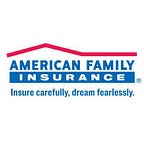Life’s Forecast: Predictably Unpredictable
By Kyle Davis, staff meteorologist, American Family Insurance
They say the only constants in life are death and taxes, but I would think weather and insurance would be honorable mentions. Thanks to the unequal heating of the earth’s surface by the sun, weather — that mood-changing, sunburn-inducing, life-giving, always-there-for-you-when-the-conversation-is-dull fact of life, is a constant.
And then there’s insurance, which most of us have of one type or another. It may not be readily obvious to some, but the two actually go together like peanut butter and jelly.
Most meteorologists don’t start out wanting to work in insurance, possibly because they don’t even know meteorologists work at insurance companies. Such was my case, but life has a way of leading you down paths you never anticipated, and it is important to be ready for new opportunities however they may unpredictably arise.
My path to being a meteorologist in a large insurance company was not a direct one. I will tell you how I arrived here and stumbled onto a national hurricane prediction team along the way.
After graduating with a degree in actuarial science and economics, I decided to go back to school to study atmospheric science. I was already in a promising field and the economics of going back to school did not add up. Not to mention, I would be leaving friends and family to move where I knew nobody, to study a subject that would likely pay me less (if I could even find a job), working horrible hours, in a field I was only guessing I would like more.
However, I was passionate about the subject, and I didn’t want to live my life thinking about what-ifs. I have to admit I was naïve about graduate school. I did not spend my time backpacking to weather stations, chasing tornadoes, or summering in Antarctica. Creating computer code, solving math equations, and publishing papers is more accurate.
The analytical tools and processes were the same as used in other fields, for the most part, and the only difference between what I did and what other data scientists did was I put “degrees C” after a number, while they put “grams” or “dollars”.
Still, my purpose in going back to school was to get into a field I found interesting, and I chose to stick with it and be passionate. It wasn’t a fake passion, but there were times I had to remind myself the kind of work I was doing was very cool, even when my classes were more about math than weather.
I decided that neither working for the National Weather Service nor being a TV meteorologist was going to fit with my life goals, and I needed to capitalize on my strengths. So with two actuarial exams passed, I decided insurance would strike the best balance for me.
To prepare for post-school life, I focused on something insurance companies were interested in: hurricanes. My advisor at the University of Arizona, where I was in graduate school, challenged me to create a statistical model — capitalizing on my strengths — to predict the number of hurricanes in the Atlantic.
I’m sure my advisor only meant it as an academic exercise to get us thinking about potential projects we could undertake, since there was little chance we would create something comparable to what other famous teams have done for decades.
After spending weeks trying whatever we could think of, interrogating every cut and transformation of the data we could to make it confess to the right number of hurricanes, we actually developed a pretty good model. We began issuing hurricane predictions in 2014, and have greatly expanded our capabilities since, from predicting only numbers of hurricanes, to named storms, major hurricanes (categories 3–5), and total energy of the season.
We have been pretty successful with results in real-time comparable to many other well-known groups (see graphic). And for the two years we have predicted major hurricanes, we have been exactly right both years.
One of the highlights came in 2017 when we were the only ones calling for an extremely active hurricane year in early June. The year ended up being extremely active with 10 hurricanes, including 6 major — we had forecast 11 and 6, almost double what others were calling for at the same time.
I hoped this hurricane work would make me more marketable, and apparently it did. After being hired by American Family Insurance, I was encouraged to continue publishing my predictions with the university. I’m grateful to have chosen a company that encourages employees to remain curious and ever-learning.
I love this part of my job because I get satisfaction from contributing to weather forecasts with great scientists from around the world. The Atlantic hurricane season has already started, meaning we have once again issued our forecast. We are calling for a 70 percent chance of a slightly above-average season, similar to last year, with eight hurricanes, three major hurricanes, and 16 named storms.
As a side note, one way to prepare for hurricane season is to make sure you check your insurance coverage. Know your insurance limits and exactly what is and isn’t covered in case a hurricane strikes.
Weather forecasters can sometimes be wrong, but I’m 100 percent confident I made the right choice going back to school. Even without tornado chasing, I’ve learned to love the intellectual challenge of working in insurance, and it is what makes my work fun.
Becoming involved in a hurricane prediction project was completely unplanned but one of the highlights of my career so far. That’s our plan for how our company we will remain like the weather — always there for you.
